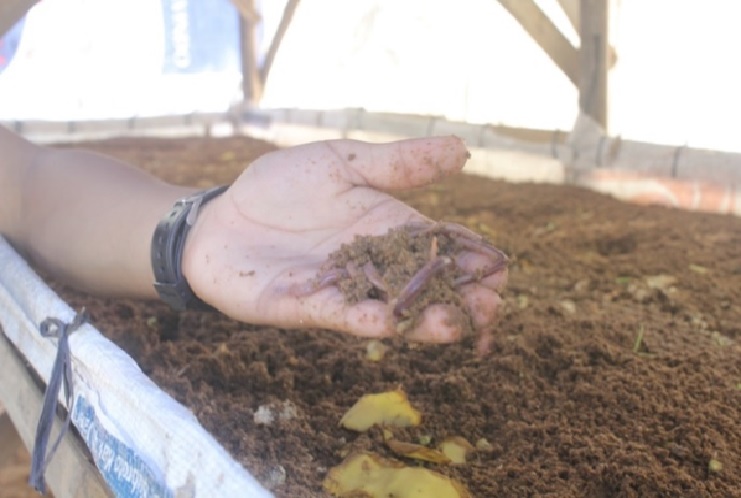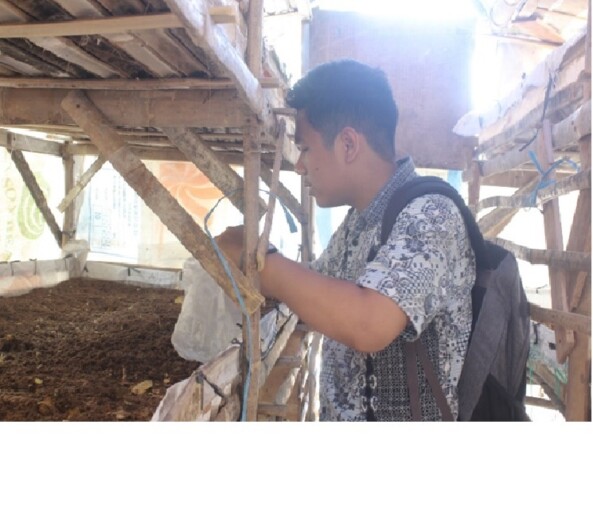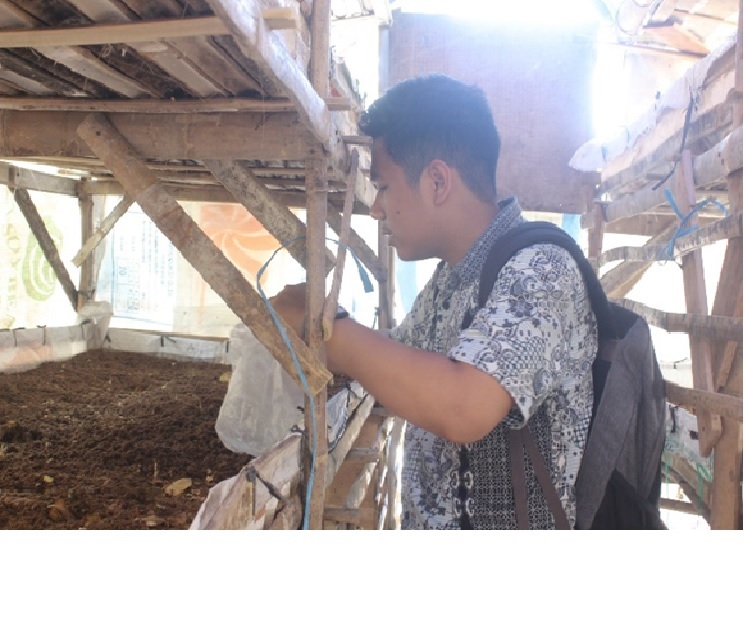A group of students from Faculty of Veterinary Medicine and Faculty of Animal Sciences UGM built worm houses as a place for making compost and earthworm (Lumbricus rubellus) production using cow manure as media. The yield of earthworm production is sold to cosmetics factories and animal feed factories to improve the economy of farmers in Palem Madu Village in Bantul Regency.
The Student Creativity Program for Community Service was carried out by Irfana Dewi Anggraini and Hadimas Bakti Pratama from Faculty of Veterinary Medicine, as well as Boby Nuryulianto, Candra Yuliono T., and Rivol Apriono Saputra from Faculty of Animal Sciences. Under the guidance of Faculty of Veterinary Medicine lecturer, Dr. Woro Danur Wendo, the students utilized cow manure into a useful product for the community, which created new jobs for Pelem Madu Village and protected the environment.
Dewi Anggraini stated that manure waste is a serious problem faced by farmers in Pelem Madu Village and other areas. In fact, unprocessed waste will have a negative impact on the environment that threatens community and livestock health by causing vector diseases.
They came up with the idea to use manure as a media to produce earthworm compost by building houses for worms. Earthworms were selected because they possess high protein content by 72% – 84.5%. “Earthworms contain 20 amino acids. High protein content of earthworm biomass is potential as a protein-rich feed ingredient to accelerate livestock growth.”
Animal feed that contains earthworms showed a high productivity as shown by the increase of livestock weight and production.
Boby Nuryulianto said the making of worm houses used simple and cheap materials, such as bamboo, sago palm, straws, used boards and clay tiles. They used stacked large wooden boxes with horizontal slats that only take a small space as container. Multistage compartments were added inside as a container for composting. Worms were planted by 0.25% of cow manure weight as a media. “Earthworms were evenly mixed, treated for at least 30 days, and turned once in 5 days. Watering was also done to keep the moisture.”
The first harvest by the students and community produced 10 kg worms. The yields were sold to cosmetics and animal feed factories for Rp50,000/kg and a total income of Rp300,000 were deposited. “The remaining worms are reused as seeding for the next two months.”
The compost harvest was done during worm harvesting by taking the worm growth media that has turned into vermicompost. Vermicompost was put into sacks and packed in plastic bags to be marketed at farm shops. “The content of vermicompost has been tested in the laboratory of livestock waste management technology, Faculty of Animal Sciences UGM,” Boby said.
He explained that vermicompost is a compost made from earthworm activities with the help of other soil microbiota, so it contains plenty of plant growth hormones. Various microbiota are useful for plants, soil enzymes, and rich in nutrients.




